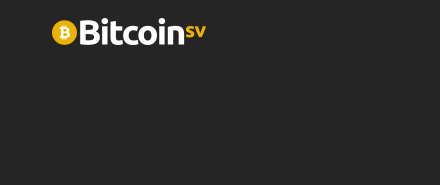 Pinnacle shareholders got saved by Gaming and Leisure Properties (GLPI) last month. Penn’s spinoff REIT got a little aggressive in March when it went directly to Pinnacle shareholders and offered them $36 a share for Pinnacle’s real estate assets, including its debt. This, after it claimed that Pinnacle’s board has been dallying after hearing GLPI’s offer. $36 a share blasts Pinnacle out of its year-and-a-half long trading range past all time pre Great Recession highs. PNK is now trading at $36.30, at over 50 times earnings.
Pinnacle shareholders got saved by Gaming and Leisure Properties (GLPI) last month. Penn’s spinoff REIT got a little aggressive in March when it went directly to Pinnacle shareholders and offered them $36 a share for Pinnacle’s real estate assets, including its debt. This, after it claimed that Pinnacle’s board has been dallying after hearing GLPI’s offer. $36 a share blasts Pinnacle out of its year-and-a-half long trading range past all time pre Great Recession highs. PNK is now trading at $36.30, at over 50 times earnings.
GLPI offered Penn’s spinoff has been working well so far, at least for the REIT itself. But why do they think they can take on even more debt when they’ve already taken on $2.61B of Penn’s? While this only puts them at 61% debt to equity, it’s still a bit high to be asking for even more. When Penn’s real estate was spun off into GLPI, its debt dropped by over 60%. If we take the same numbers assuming this hostile takeover goes through, it’s another $2.4B in debt approximately, which would take GLPI to over $5B, or 117% debt to equity?
Is that even possible to hold, and even if it is, is it wise?
The surprising answer, given my aversion to high debt levels, is actually yes on both counts. Here’s why.
Before Penn spun off its real estate into GLPI, Penn had $1.7B stuck in variable rate debt on its balance sheet (see page 60), more than half of it due in 2016. You would expect, then, that GLPI would have acquired the same amount in the same condition, but no. GLPI has only $558M (page 51)in variable long term debt, which is only 13.2% of its market cap.
GLPI, the Penn spinoff, only has $558M (page 51) in variable long term debt, only 13.2% of market cap, all due in 2018. Over $2B is fixed rate at between 4.3% and 5%. So not only was the Penn spinoff successful by enabling Penn to lighten its debt load to somewhat manageable levels (maybe), it was successful because it transformed almost the entire load to something that really can be paid off in time without too much financial pressure.
GLPI essentially took the $2.61B in Penn’s debt and transformed $1.14B of it from floating to fixed, a heck of a refinancing deal. So can it take on another $2.4B of Pinnacle’s debt if it had too? $3.3B of Pinnacle’s massive $4B debt pile is variable rate. Almost 200% debt to equity and most of it unprotected. If 60% of it goes to GLPI and they transform it, or much of it, into fixed payments, then yes, it’s very doable and would help both the REIT and Pinnacle. I do not understand why the Pinnacle board has so far ignored the offer, unless there’s something going on behind the scenes here that I’m simply not aware of, which is very possible. I suspect some bad blood somewhere between GLPI and Pinnacle, or Penn and Pinnacle, or both.
GLPI’s business model is a triple net lease, which is the other side of the fixed rate debt coin, very similar concept. With fixed rate you pay a higher premium on debt in exchange for the payments being predictable. You’re betting on higher interest rates and higher inflation. In a triple net lease, the lessor pays the taxes, insurance, and maintenance costs, but the leaser gets a lower rent in return for not having to pay these expenses. You’re betting on higher taxes, higher insurance, and higher maintenance costs, essentially the same bet as increased interest rates and inflation, which all go together.
GLPI looks like it knows exactly what it’s doing, and I see this deal going through eventually, be it through the board or through the shareholders themselves. 102% of Pinnacle stock is institutionally owned to getting to the shareholders in bulk won’t be too difficult. There is no way Pinnacle can continue operating without becoming the next Caesars if it doesn’t drop its debt significantly soon.
Even if it does, both Penn and Pinnacle will be stuck paying the triple net costs – insurance, taxes, and maintenance, which in my opinion gives GLPI the sweet end of the deal, both on the debt itself and on the terms of the lease. As to the future health of these casinos is interest rates do not stay low I can’t say. GLPI looks much safer and a better buy.
The first Fed rate hike looks set for sometime midyear. When it happens, interest rates will take a serious jump. Once price inflation picks up, the Fed hikes will have to be more frequent and more aggressive, putting GLPI in a better and better situation, and Pinnacle and Penn in a more and more precarious one.





